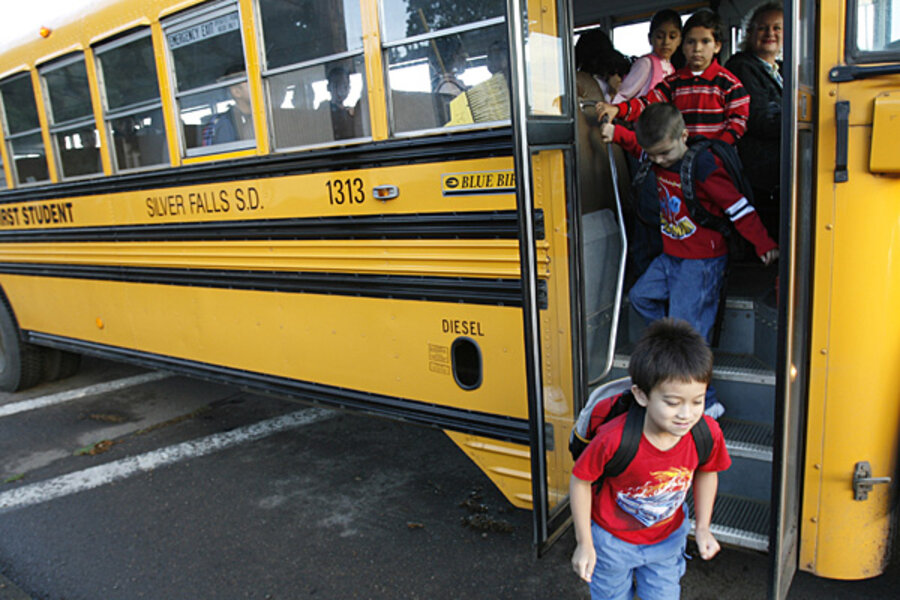Back-to-school shopping? Do it the frugal way.
Loading...
Now that I have two young ones in school (and one of them in preschool … one who likes to make sure to tell everyone that he is also in school), the annual cycle of buying school supplies and preparing for the upcoming year is now a part of our lives.
Thankfully, the past few years have taught us several useful tactics for making this annual rite pass by in a much less expensive fashion. Here’s what we’ve learned.
The first place to shop for school supplies is at home.
When you get that school supply list – the one that’s full of things like “pencil holders” and “two black pens” and other things – the first thing you should do is go around your house and figure out which of those items you already have.
It’s likely that you already have quite a few of those things around your house because your children used them in previous years. Sometimes, they might end up reusing the item they were using in the spring – at other times, they might be using a hand-me-down from their sibling.
To fill out the rest of your list, watch the flyers.
Department stores love to use school supplies as loss leaders in August. Before you go out and start buying like crazy just to get the list out of the way, start watching the flyers.
In Ankeny, Iowa, the town where we often shop, there’s a Wal-Mart, a Target, a Home Depot, and several other stores extremely close to each other. We’ll just watch the flyers for all of these stores, figure out the best time to get the supplies, then make a list for each store and get the items needed there.
So, if one store has notebooks for ten cents and another store has crayon boxes for a quarter, we’ll hit both and score both of the discounts. Since you’re usually buying quite a few items, if you can split them between the stores effectively, it makes that second (or third) stop well worth it.
Buy basic items, then let your kids personalize.
Let’s say your daughter wants a Barbie folder so she can be one of the fashionable kids on the first day of school. The store is selling Barbie folders for $0.99 and plain pink ones for a dime. Your kid needs five folders. Which do you buy?
If you’re buying anything but the pink ones, you’re making a mistake. Buy the cheap folders, pick up a pack of stickers on your way out, and let your child decorate their own Barbie folder!
You can apply the same philosophy with notebooks, too. Rather than spending $10 on branded school supplies, buy $2 worth of cheap school supplies, $2 worth of stickers, and suddenly your children not only have the notebook style they want, but they can decorate it themselves with the stickers and any art supplies you have at home. You save $6 and your children have an afternoon art project. What’s not to love?
The first place to shop for school clothes is the social network.
Do your kids have any older cousins that outgrew their new school clothes after only wearing them three or four times? Those are perfect hand-me-down material. My kids are all wearing hand-me-downs from older cousins and siblings.
The best way to get this kind of exchange started is to give. If you know of a cousin or a friend who needs clothes for their youngster, give them what you no longer need. That’s often the spur that’s needed to get others involved in the chain, often resulting in you receiving hand-me-downs.
You can also ask, particularly if you have a relative or friend with children older than your own.
The second place to shop for school clothes is at the secondhand store.
If you’re going to buy new clothes, start with the secondhand clothing stores.
Starting your clothes shopping at secondhand stores makes a ton of sense. For starters, you know there will be a lot of clothes available there. Yes, some of it will be junk, but quite a lot will suit your needs.
Just go. Be picky. Choose only the items that truly meet your needs. The thing to remember is that you don’t have to buy the threadbare items. You can pick and choose to your heart’s desire.
Tax-free holidays are your friend.
If you end up actually buying new clothes during the back to school period, take advantage of tax-free holidays.
Many states offer “holidays” where buyers do not have to pay sales tax on particular items. In Iowa, the first weekend in August is typically such a holiday for clothing, which is timed perfectly for back to school shopping.
Of course, retailers realize this. Many retailers push clothing sales hard on that weekend, meaning that you’re not only saving on clothes prices, you’re also taking advantage of steep discounts.
If you combine all of these tactics, the back to school period doesn’t have to be a financial bomb for you. Instead, you can take it in financial stride without having to deprive your children.








